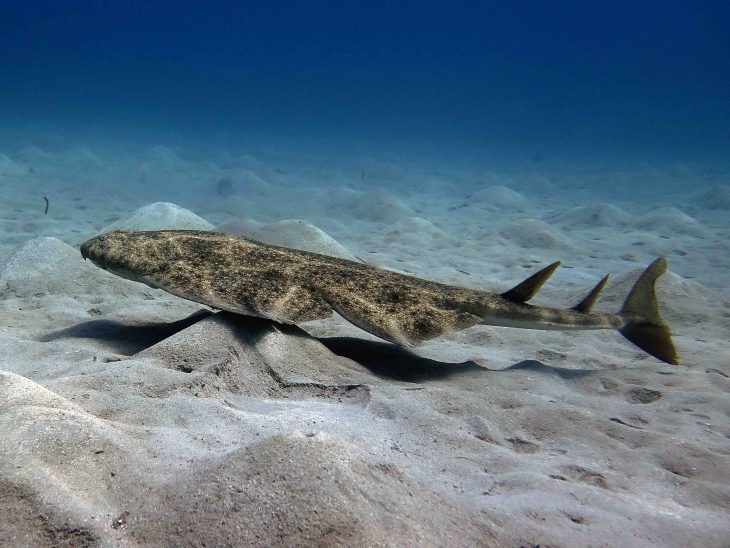
The angel shark, also known as the monkfish or angel shark, is a fascinating species of shark that captivates marine enthusiasts and researchers alike. With its unique appearance and behavior, the angel shark has carved a niche in the underwater world. In this article, we will explore 11 intriguing facts about angel sharks, shedding light on their biology, habitat, conservation status, and more. So, let’s dive into the depths and uncover the secrets of these remarkable creatures.
Angel Shark Appearance and Behavior
The angel shark gets its name from its flat body shape, resembling that of a stingray. It has broad pectoral fins that resemble angel wings, hence the name “angel shark.” These sharks spend most of their time lying on the ocean floor, burying themselves in the sand or mud to camouflage and ambush prey.
Species Diversity
There are approximately 25 known species of angel sharks, each with its own unique characteristics. Some common species include the Squatina squatina, or common angel shark, and the Squatina californica, or Pacific angel shark.
Habitat and Distribution
Angel sharks can be found in the coastal waters of the Atlantic Ocean, Pacific Ocean, and the Mediterranean Sea. They prefer sandy or muddy bottoms where they can easily bury themselves for camouflage. These sharks are typically found in shallow waters, but some species can venture into deeper depths.
Feeding Habits
Angel sharks are ambush predators that primarily feed on fish and small benthic (bottom-dwelling) invertebrates. They lie in wait for their prey, and when an unsuspecting fish swims by, the angel shark lunges forward and uses its powerful jaws to capture the prey.
Reproduction and Lifespan
Angel sharks reproduce through internal fertilization, and females give birth to live young. The gestation period can range from several months to a year, depending on the species. Angel sharks have a relatively slow growth rate and can live up to 25 years in the wild.
Threats and Conservation Status
Several species of angel sharks are currently listed as critically endangered or endangered by the International Union for Conservation of Nature (IUCN). Habitat loss, overfishing, and accidental capture in fishing nets are major threats to their survival. Conservation efforts are underway to protect and restore their populations.
Angel Shark Sightings

While angel sharks are not as commonly encountered as other shark species, sightings by divers and fishermen do occur. These encounters provide valuable opportunities for researchers to study their behavior, population dynamics, and distribution.
Adaptations for Survival
Angel sharks have evolved unique adaptations to survive in their environment. Their flattened bodies and coloration allow them to blend seamlessly with the ocean floor, providing effective camouflage. Their large, upward-facing eyes enable them to scan for prey and potential threats from their concealed positions.
Angel Sharks and Human Interaction
Angel sharks are generally not aggressive toward humans unless provoked or cornered. However, due to their declining populations, it is important to respect their natural habitats and avoid activities that may harm them or their ecosystems.
Angel Sharks in Mythology and Culture
Throughout history, angel sharks have been associated with various mythologies and cultural beliefs. In some cultures, they are seen as symbols of protection or divine presence, while in others, they are regarded as omens or representations of mythical creatures.
Angel Shark Research and Conservation Efforts
Scientists and conservation organizations are actively researching angel sharks to better understand their biology, behavior, and population dynamics. Conservation initiatives focus on habitat protection, regulation of fishing practices, and public awareness campaigns to promote their conservation.
Final Thoughts
Angel sharks are captivating creatures that have adapted to their unique environments with remarkable efficiency. As we continue to explore and study these magnificent sharks, it is essential that we strive to protect their habitats and ensure their survival for future generations to appreciate and admire.
Frequently Asked Questions (FAQs)
Are angel sharks dangerous to humans?
Angel sharks are generally not considered dangerous to humans. However, if provoked or threatened, they may defend themselves. It is important to exercise caution and respect when encountering these creatures in their natural habitats.
Can angel sharks be kept as pets?
No, angel sharks are not suitable for home aquariums. Their large size, specific habitat requirements, and conservation status make them unsuitable for captivity.
Can angel sharks regrow their teeth?
Like other sharks, angel sharks have rows of teeth that continuously grow and replace themselves throughout their lives. This allows them to maintain functional teeth for capturing and consuming prey.
Do angel sharks migrate?
Some species of angel sharks undertake seasonal migrations, often in response to changes in water temperature and food availability. These migrations may be relatively short-distance movements.
How can I support angel shark conservation efforts?
You can support angel shark conservation by raising awareness about their plight, supporting marine conservation organizations, and promoting sustainable fishing practices. Additionally, participating in citizen science programs can contribute to data collection and research efforts related to angel sharks.
Was this page helpful?
Our commitment to delivering trustworthy and engaging content is at the heart of what we do. Each fact on our site is contributed by real users like you, bringing a wealth of diverse insights and information. To ensure the highest standards of accuracy and reliability, our dedicated editors meticulously review each submission. This process guarantees that the facts we share are not only fascinating but also credible. Trust in our commitment to quality and authenticity as you explore and learn with us.
